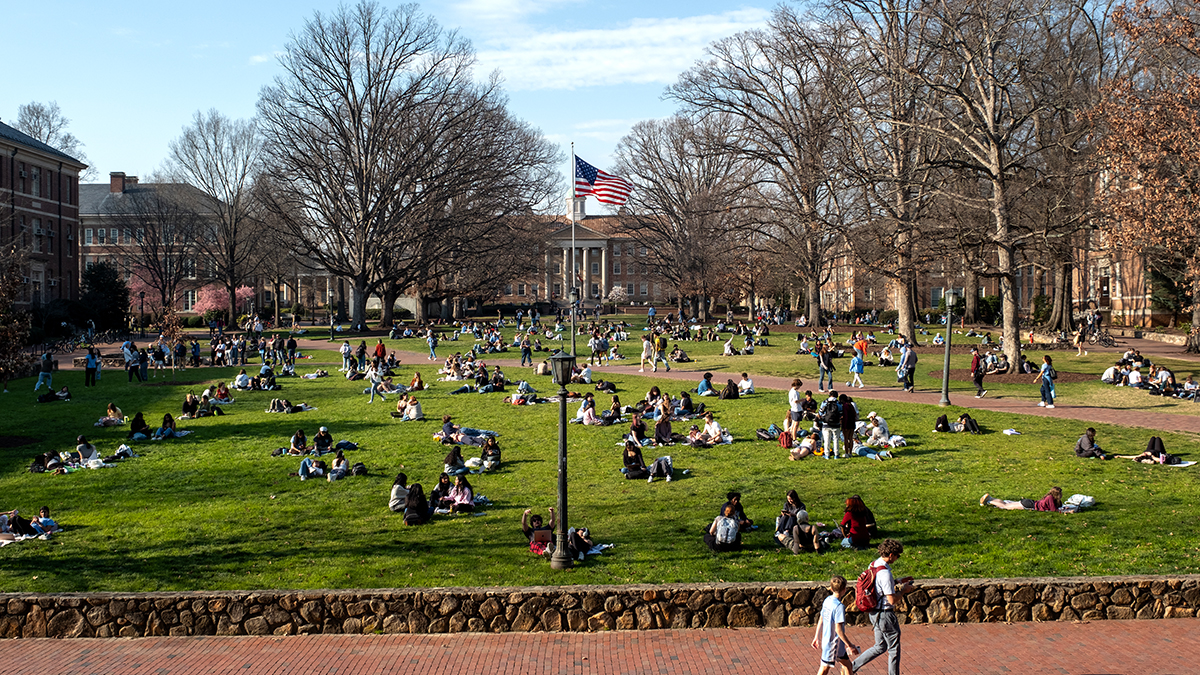Amateur Archivists
Maya from the Margins fosters cultural understanding among Maya youth on both sides of the border — Morganton, North Carolina and Yucatán, Mexico.
Fourteen high school students listened attentively as University of North Carolina at Chapel Hill anthropologist Gabrielle Vail invited them to examine letters, drawings, photos, diaries, codices, newspapers and other Maya materials from the Southern Historical Collection in Wilson Library.
“Start thinking about these materials in terms of ‘how can I tell the story of Maya migration?’” Vail said. “Explore them from a historical perspective, but also bring it into the present and think of a personal connection.”
Maya from the Margins is a program that fosters cultural understanding among Maya youth on both sides of the border — Morganton, North Carolina, and Yucatán, Mexico. Together, the students spent the year exploring their indigenous identity through workshops, online discussions, archival research and visits to their respective countries, where they met face-to-face. Both sets of students also developed research projects in English and Spanish for capstone projects.
In April, an exhibition called “Revitalizing Maya History and Heritage: My View from the Archives,” that the students from Morganton and Mexico curated, was on display at Wilson Library.
The program was funded by a Museums Connect grant, an initiative of the U.S. State Department’s Bureau of Educational and Cultural Affairs, administered by the American Alliance of Museums. Partners include the Southern Historical Collection, the department of anthropology and Research Laboratories of Archaeology in UNC-Chapel Hill’s College of Arts & Sciences and the State Archives of Yucatán. Vail is project coordinator of Maya from the Margins, which builds on longtime cultural heritage work by Kenan Eminent Professor of Anthropology Patricia McAnany.
“If you look at the changing texture of the South demographically … these students are grappling with all kinds of things, including ‘how can I embrace my past and where I find myself today?’” said Bryan Giemza, director of the Southern Historical Collection, which houses the papers and materials of George E. Stuart, a Carolina graduate and a scholar of the ancient Maya whose archaeological career with the National Geographic Society spanned nearly four decades. “They are very insightful; their interpretations are really sophisticated.”
Patton High School senior Eduardo Mendoza’s parents traveled from Guatemala to Morganton, located in the foothills of the Blue Ridge Mountains, in 1998 looking for better job opportunities. Mendoza said he does a lot of online research in school, so he appreciates the exposure to these rare documents.
“You can tell the professors are very passionate about what they do, and I like that I have the opportunity to ask them questions,” he said.
It was also a great experience for two Carolina undergraduate students who served as mentors. Jacqueline López was a senior pursuing a double major in Latin American studies and public policy. She spent six weeks in Yucatán in 2015 and worked with the students on learning Yucatec Maya.
“I didn’t start developing the tools to explore my own culture until I arrived at UNC,” said López, a first-generation college student. “To help them do that earlier in their careers has been so rewarding.”




